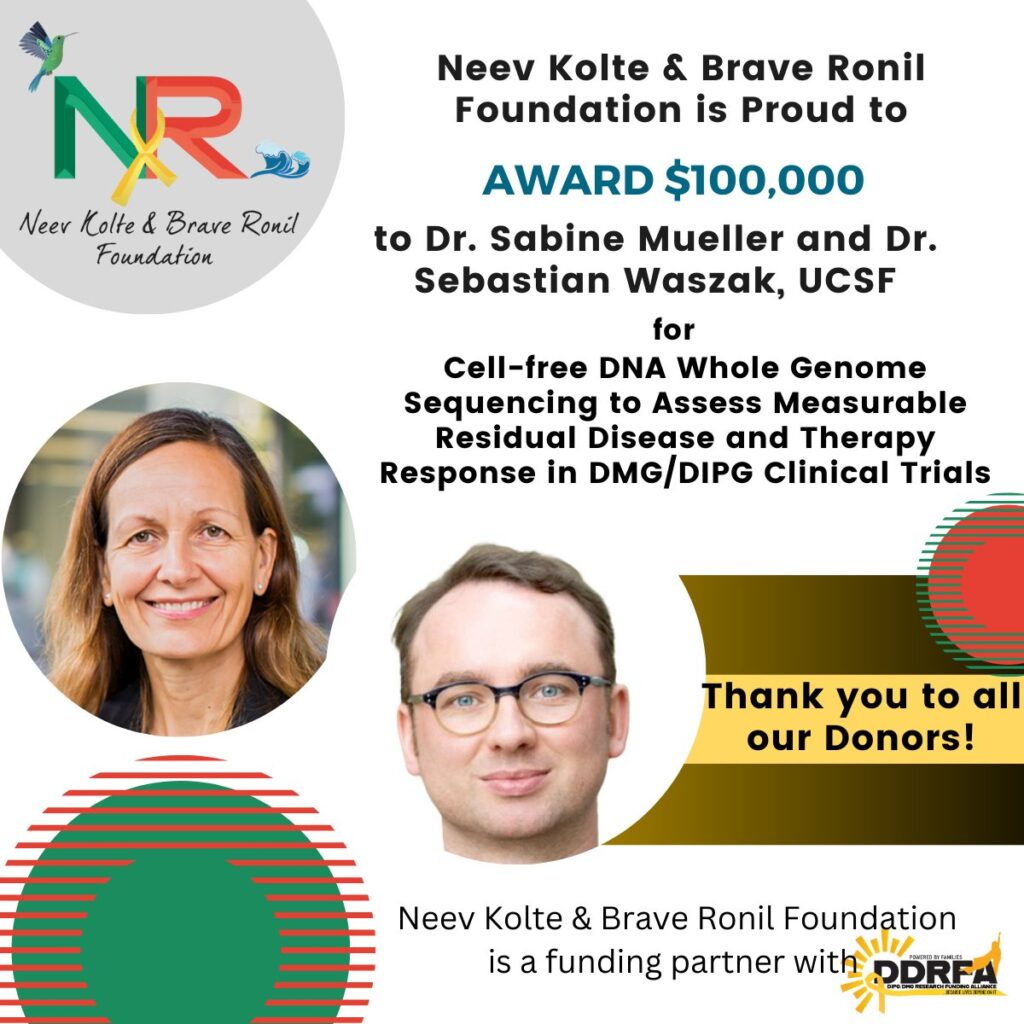Targeting circadian regulation of epithelial-mesenchymal transition and tumor invasiveness in pediatric gliomas 10K
Researchers-
Dr. Erin Gibson and
Dr. Laura Prolo
Pediatric high-grade gliomas (pHGGs) are the most lethal childhood cancer. Currently, diffuse intrinsic pontine gliomas (DIPGs) are universally lethal within 1 year of diagnosis with minimal clinically approved treatments to not only extend life but also to minimize the disease. DIPG is highly invasive within the brain and is well-suited to infiltrate healthy brain tissue. Thus, any ways to increase the effectiveness of existing treatments would have an immediate impact on patient outcomes. Recent work has shown that timed administration of chemotherapy during specific windows within the 24-hour day increased therapeutic efficacy and survival in adults with high-grade gliomas. Whether this chronotherapeutic, or time-based treatment, approach equally enhances the effectiveness of drug treatment for pHGGs like DIPG remains unknown partially due to the lack of knowledge around the role of the molecular timing system, or circadian clock, within these cancerous cells. Virtually every cell in the body, including healthy and malignant cells, contains the circadian molecular clock machinery necessary to cycle on an approximately 24-hour schedule which, when synchronized by the brain's primary clock, allows for entire organ systems and thus organisms to synchronize to the 24-hour light/dark cycles experienced on Earth. To this end, we aim to determine if the circadian molecular clock is present and functional in patient-derived DIPG cells and other high- and low-grade gliomas in our own patient-derived lines and publicly available data sets. The circadian clock regulates genes that control the structure and movement of numerous other brain cell types, including cells that are believed to be the cell of origin for DIPG. Given this, we aim to determine if the loss of the molecular circadian clock within these patient-derived high-grade glioma lines alters their migratory and invasive abilities. We will investigate this potential by genetically turning down the function of the molecular clock and studying the migratory and invasion ability of pHGG cells like DIPG that have the circadian clock intact or those with a circadian clock that has been disrupted. At the completion of this work, we aim to have a more complete understanding of the molecular mechanisms that regulate DIPG invasiveness and determine if time-of-day treatments may be an effective strategy to increase the effectiveness of treatments and survival of children with DIPG.
Mapping DMG response and resistance to therapy 15K
Researchers-
Javad Nazarian and
Aaron Diaz
Diffuse midline gliomas (DMGs) are heterogeneous tumors occurring in midline brain structures. As such, the response to therapy varies amongst children diagnosed with DMG. For example, while most DMG patients respond to radiotherapy (RT), some children do not exhibit clinical responses to RT. Additionally, we and others have shown early clinical response to ONC201, yet a number of patients have shown resistance to ONC201. As such, it is important to understand the molecular basis of resistance/response to therapy. The objective of this project is to determine the cellular transcriptomic, genomic, and epigenetic map of resistance to therapy in DMG patients. Our rationale is that a combined analysis of cellular multi-omics and clinical variables will elucidate therapy escape mechanisms and help design effective combination therapies. We propose to apply single-cell multi-omics profiling to a large cohort (n=40) of patient postmortem specimens. Our cohort includes ONC201 treated (n=18), RT-treated but ONC201 naïve (n=10), and non-CNS cancer control (n=12) subjects. Additionally, we will integrate single-cell data from 20 treatment-naïve diagnostic biopsy specimens which we have previously profiled. We will perform single nuclear RNA sequencing and transposase-accessible chromatin (ATAC) sequencing. A combined analysis of these data will identify cellular genetic and epigenetic correlates of resistance that we will exploit going forward in preclinical studies. The impact of this project is that we will derive predictive biomarkers of treatment response, as well as elucidate novel therapeutic targets for adjuvant therapies to enhance combination therapies.
